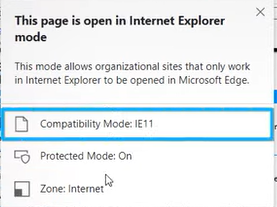

When AIP is enabled for a tenant, all users can sync Microsoft Edge data, regardless of licensing. Use Azure Information Protection to configure Microsoft Edge syncĬonfiguration options for Microsoft Edge sync are available through the Azure Information Protection (AIP) service. ForceSync: Force synchronization of browser data and don't show the sync consent prompt.The settings stored in Microsoft Edge profiles (favorites and preferences) are also saved to a file stored in the Roaming user profile folder (or the location specified by the administrator.) For more information, see On-premises sync for Active Directory (AD) users. RoamingProfileSupportEnabled: Allow Active Directory (AD) profiles to use on-premises storage.Use this policy to limit the type of data uploaded to the Microsoft Edge synchronization service. SyncTypesListDisabled: Configure the list of data types that are excluded from synchronization.AllowDeletingBrowserHistory: When this policy is set to disabled, history sync will also be disabled.SavingBrowserHistoryDisabled: Disables saving browsing history and sync and open tabs sync.This policy disables cloud synchronization only and has no effect on the RoamingProfileSupportEnabled policy. SyncDisabled: Disables data synchronization.Azure Information Protection P1 or P2 for Students or FacultyĪdmins can use the following group policies to configure and manage Microsoft Edge sync:.Exchange Online for Students or Faculty.Business Premium includes Azure Active Directory Premium Plan 1 and Edge Enterprise Sync Services are available, see Microsoft 365 Small and Medium-sized Businesses. Customers can file a support request if they need to backfill a tenant.

If you have done everything correctly and you have installed the latest updates for EMSL you should be able to view your browsers' compatibility lists from the about:compat page in both IE11 and Edge.Business Basic or Business Standard is supported, but existing tenants need to be backfilled with the RMS_S_BASIC service plan needed by AIP. You should also (for IE11) follow the steps at Once you have done that on your dev machine export the reg key to a reg file so you can deploy it to other clients/or create a power script to do the same. Then create "MicrosoftEdge", then "Main", then "EnterpriseMode" and then finally add a value for "SiteList" (REG_SZ) and enter the path to your sitelists xml file. (search for sysinternals)Ĭreate the new Key "Microsoft" under HKEY_LOCAL_MACHINE\Software\Policies You can test your implementation by using the procmon.exe tool to monitor registry reads/writes when a web browser is started. that is, until you create a sub node manually or change a GPO setting, the keys and values won't exist in the registry.rather than enumerating ALL of the sub keys under Policy, software will just enumerateĪnd process those keys that already exist.

All keys under the Policies Node are dynamic.


 0 kommentar(er)
0 kommentar(er)
